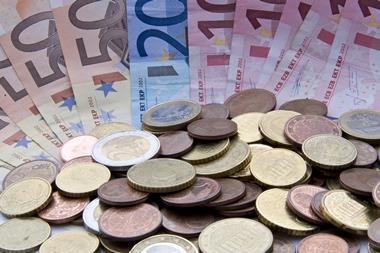Around a fifth of investment funds that asset managers have classified as Article 8 under the EU’s Sustainable Finance Disclosure Regulation (SFDR) do not have a solid environmental, social and governance (ESG) profile as assessed by advisory and portfolio analytics firm MainStreet Partners, the company said today.
In a report, the firm said 21% of the Article 8 funds in its universe achieved a proprietary rating of less than three out of five, missing the threshold for MainStreet Partners to consider them as “sustainable”.
It did not assert that this meant the funds were “categorically guilty of greenwashing”, but offered an average rating of those funds by different pillars to identify whether there were areas in which the funds were collectively lagging.
The firm’s conclusion is that matters to do with strategy and portfolios are dragging down Article 8 funds’ MainStreet Partners score, less so than the overall ESG capabilities and commitment from the asset manager.
It noted the adoption of an informal classification of so-called “Article 8 plus” funds by asset managers in an attempt to bridge the gap between the Article 8 and 9 descriptions in SFDR.
This further classification resulted from the MiFID II draft sustainability assessment, which could be considered more stringent than SFDR, the report authors wrote.
The SFDR is not intended as a labelling framework, but is in many ways being approached and discussed as one.
The findings presented in MainStreet Partners’ report are based on the firm’s ESG database of 4,200 funds/ETFs and over 50,000 individual ISINs, covering more than 160 asset managers whose products within the universe collectively represent €5.6trn in assets under management.
Over two-thirds (70%) of the funds are classified as Article 6. Article 8 funds total 25% of the universe, with the remaining 5% represented by Article 9 funds.
In its report, MainStreet Partners highlighted that were was a significant commonality between Article 6 and Article 8 SFDR funds’ ESG risk rating by the firm, with some Article 6 funds scoring higher than some Article 8 classifications.
This was likely to do with the differing levels of caution with which asset managers were proceeding in classifying their funds.
Article 9 funds managed by asset managers headquartered in Europe scored on average 0.4 points higher than their US counterparts, MainStreet Partners found.
It also said that overall, the classification of funds under Article 8 and 9 had correlated with larger inflows into these products, suggesting that investors were placing their trust in the labels.
“However, assessing the degree of genuine ESG integration has arguably become more difficult, given the diversity of products on show and the absence of standardisation,” it said.
In the European Commission’s renewed sustainable finance strategy document from July, the EU executive said it would propose minimum sustainability criteria for financial products that fall under Article 8 of the SFDR, “in order to guarantee minimum sustainability performance of such products to further strengthen a harmonised application of the Regulation and incentivise transitional efforts”.
Simone Gallo, managing director of MainStreet Partners said the firm hoped to see greater alignment between the SFDR Article labels on funds and its own ESG ratings as asset managers continued their work to transition investment processes and strategies.
“Otherwise, there is a risk that accusations of greenwashing begin to gather more credence, which would be damaging for the industry as a whole, and for investors’ trust in sustainable investment approaches,” he said.











No comments yet